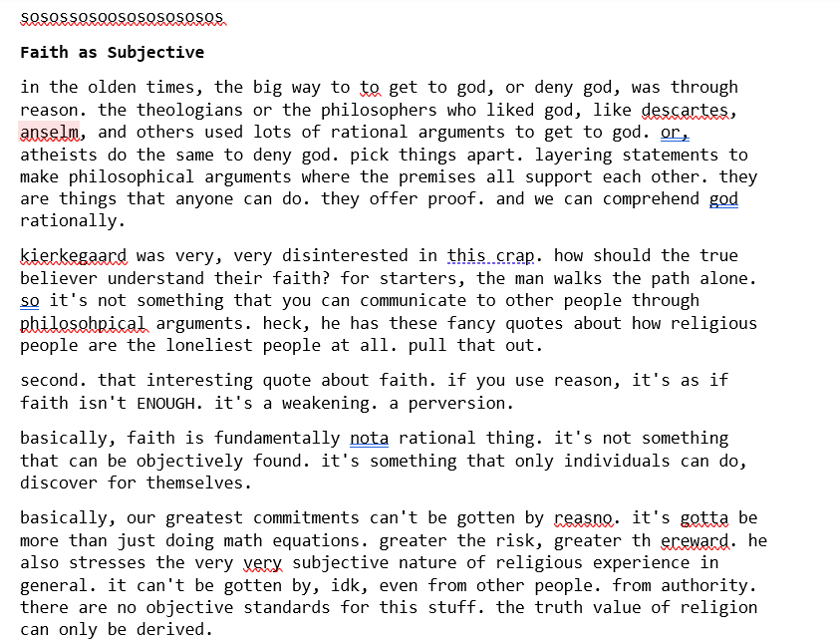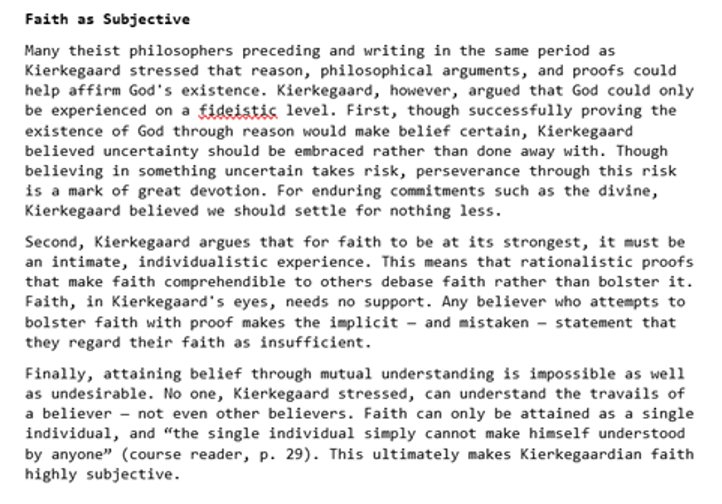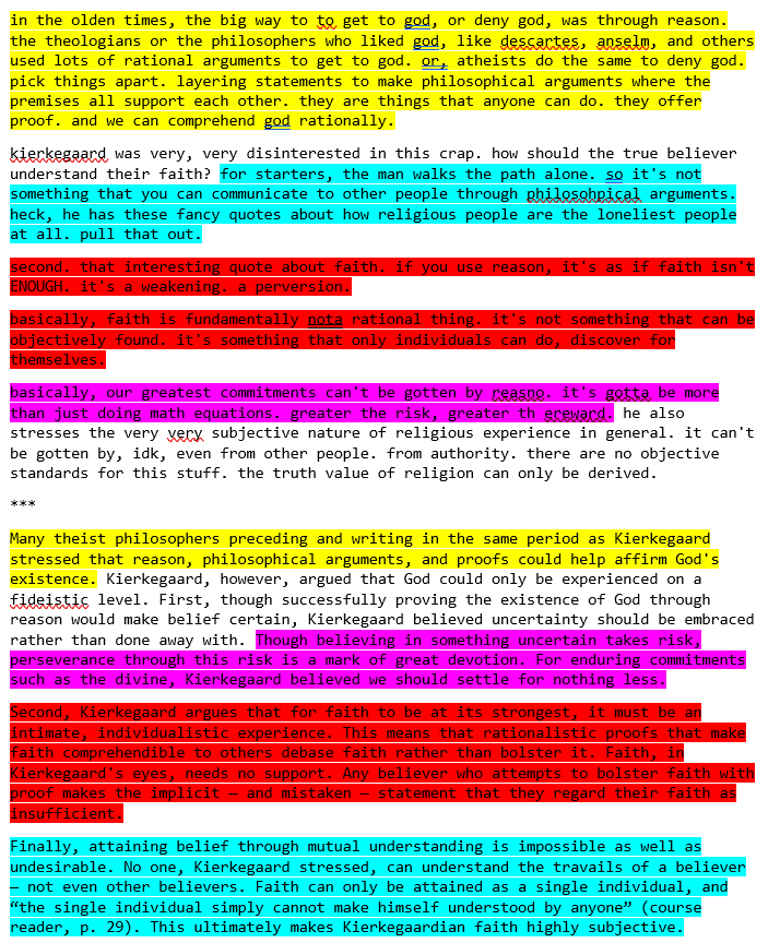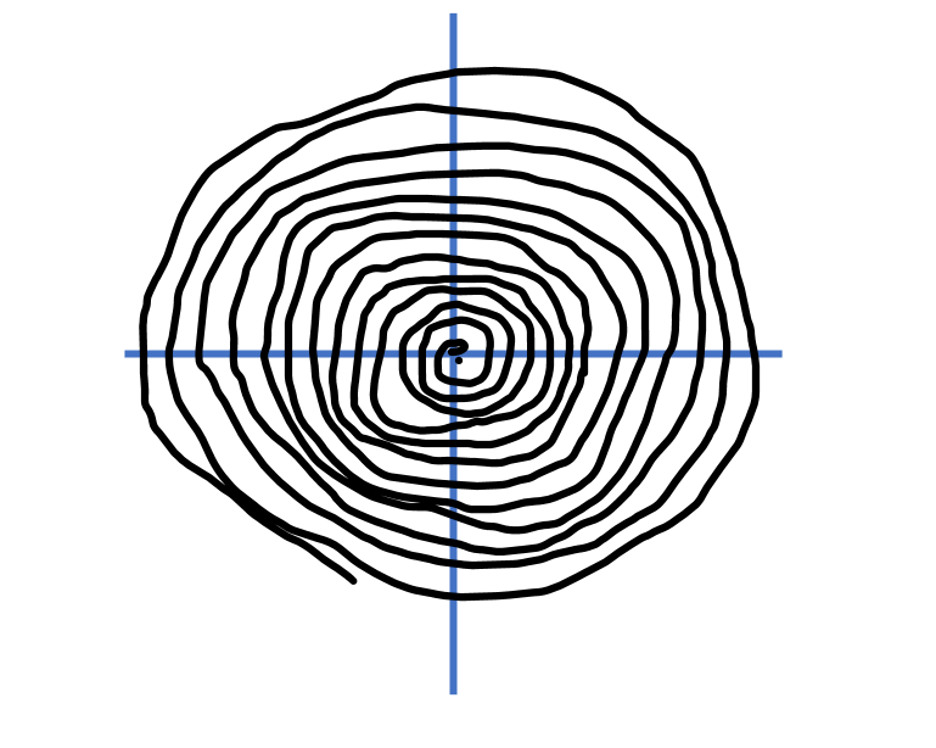Freewriting Your Way Past Writer’s Block
By Amery, a Writing Coach
Everyone’s probably heard the terms ‘writer’s block’ or ‘blank page syndrome’ before. For someone as self-critical of my writing as I am, though, none of those words seem to capture how horrible – even painful – the writing process can feel. It would be one thing if I was dealing with the mere absence of ideas. Often, though, it feels like the space in my mind where ideas would come from is constantly filled by a belittling, self-censoring voice. You’re real stupid, aren’t you? it says. Seriously, you just need one more phrase to go here. Just three words. You can’t even do that? What’s taking you so long? When I do think of a few words, though, the voice immediately rules them out — well, that’s really dumb. Why would you think that would go there? You think you’ll get a final draft if you keep doing this? Spending enough time listening to this voice starts to make me feel on edge, even physically sick. At my worst moments, I get in bad moods that last for an entire day.
Trying to write with that voice in my head feels like a breakneck run. Whenever I slow down or take too long to think about what I’m writing, the voice always catches up. A big part of my continued writing growth involves constantly discovering and inventing strategies to thwart and evade it.
Among the different strategies I’ve picked up over the years I’ve spent fleeing the voice, freewriting has always been my mainstay. The strategy goes by many names, such as ‘automatic writing,’ ‘blabbling,’ or ‘jabbering.’ In Writing Without Teachers (you can find an excerpt here), freewriting proponent Peter Elbow mentions that freewriting only has one rule: not stopping! This means forgetting grammar, punctuation, sense, or structure, and not being afraid to keyboard mash, squiggle, or write “I don’t know what to say, I don’t know!” when you reach moments you’re feeling blocked.
Freewriting might seem too weird to be useful, at least at first glance. We usually think of essay writing as something demanding constant focus, structure, and intention. Why would writing gibberish be helpful at all? For me, freewriting helps me maintain that focus, structure, and intention while also giving myself the space to explore and experiment. I’ve found freewriting very useful as both a brainstorming tool and a way to generate writing. I usually start freewriting with a topic in mind and some vague idea about structure. Later, I refine and elaborate on the material I generate to create my papers.
I find doing this easier (and more fun!) than making an outline, and it helps me reduce the pressure I might put on myself. Especially in the prewriting stages, being super meticulous would take too much time and slow me down. Turning off my constant need to make sense, at least in the moment, allows me to write faster than writer’s block can catch up.
One essential part of my freewriting process is giving myself the space to make mistakes. If you’re a self-critical academic writer like I am, giving yourself leeway to mess up might seem absolutely nuts. Getting everything right on the first try, though, is simply not how our thinking or learning works. When you learn how to ride a bike, you fall a lot. If you’re developing your perspective on important personal matters or political/moral issues, your opinions will inevitably shift and evolve over time as you gain more maturity or understanding. Why would we expect anything different from writing an essay? Academic writing is, after all, a form of learning or thinking. The freewriting session gives you the chance, separate from a grade or the eyes of others, to make as many mistakes as needed before you create a final product.
Freewriting also feels amazing, even cathartic to do sometimes. Again, if you’re mainly an academic writer or someone who struggles with being self-critical, the idea that the writing process can feel fantastic might seem bonkers. But I’ve actually grown to look forward to freewriting sessions. Some of my favorite moments in the essay-writing process involve turning on one of my favorite playlists and banging out some freewriting. (You can also check out alex’s post on “Writing from Silence, Reading with Music” on this blog for more recommendations!)
To give you a little peek into how I use the strategy, I’ll share a bit of freewriting I did when writing an existentialism paper I submitted a while ago.

One thing you might notice from reading the segment is that the tone, spelling, and grammar are all over the place. I typed it entirely in lowercase, and there are plenty of spelling errors due to how quickly I was typing. The tone is also super informal, with words like ‘idk’ and ‘crap’ (this freewriting segment was mildly edited — ‘crap’ was not the initial word I used!).
You might also notice that, despite this segment’s complete chaos, you can pick up the beginnings of a few paragraphs hidden in there. When I started freewriting, I had a vague idea of how my paper would be structured. The prompt asked me to describe Kierkegaard’s ideas on faith, offer a counterargument to Kierkegaard’s views, and suggest ways Kierkegaard might respond. I immediately decided to structure the paper into four subheadings: two to introduce Kierkegaard’s ideas on faith (of which this is the first), one to introduce the counterargument, and another to address the counterargument. After writing each subheading (for example, the “Faith as Subjective” subheading in the segment above), I started freewriting under each of them until I felt like I had enough ideas.
There are also places in this segment where I talk my way into my ideas. Words like ‘heck’ or ‘idk’ sound conversational, almost like I’m talking about Kierkegaard with a friend and I’m trying to find the right words to say. One other way I prime myself to start generating ideas is doing a little bit of keyboard mashing before starting a session (the ‘sosossosoosososososos at the top of the document). It’s a small ritual I do before each freewriting session to limber up my muscles and get into the zone.
I also give myself directions while freewriting. I wrote “that interesting quote about faith,” for instance, as a reminder to revisit the Kierkegaard reading to find a quote that I previously remembered but didn’t want to interrupt my flow to try finding.
After finishing some freewriting, I usually start another session based on the ideas I produced in the previous one. Each subsequent freewriting session, though, creates writing that’s a little more focused than the writing in a previous section. After a few rounds of drafting and freewriting, the paragraph turned out like this:

What specific ways did I build out that initial freewriting session? In some feedback I got in an earlier draft, my professor mentioned that he’d prefer the essay to be more quote-light, so I decided not to follow the instructions I left to myself to find the quote I was trying to remember. I did, though, decide to leave in one quote that I felt was especially important.
I also expanded some of the threads I noticed in a previous freewriting session while reducing some others. Below, you can see a highlighted version where you can see how each part of the first freewriting session contributed to the final product:

When I flesh out a freewrite, I ask myself a few questions: “Are there places I wrote too little? Are there places I wrote too much? Are there any patterns I can pick up that might help me structure the body paragraphs?”
For some places in the freewrite, I made reductions. When editing the yellow section, I realized that mentioning specific philosophers and theologians took too much space and I could make my point without them. For the red, purple, and blue sections, I expanded the unclear, misspelled, and sometimes vague sentences in the freewrite to make them clearer. I also rearranged the order of information. Often one great way to find patterns in a freewrite is dividing it into chunks that seem to be controlled by a main idea (almost like paragraphs!). Once you’ve “chunked” your freewrite, you can start playing with the order. Though I’m not as happy with the order of this paper as I’m looking back, I do see the pattern I was trying to go for – the main ideas of the purple, red, and blue sections can be summed up as “uncertainty is desirable, certainty is undesirable, certainty is impossible.”
For projects like these, I mainly just freewrite until the project is done. If you want to spice things up a little, though, here are some additional things you can add to your freewriting:
- Timed freewriting involves freewriting within set intervals. This might be helpful if you’re the type of person that likes brainstorming in short bursts.
- If you’re doing an assignment that requires analysis, you might try pulling out a quote you find interesting or important and start a freewriting session with it on top of the page.
- If you like freewriting on paper, you can try something called spiraling. Before you start a freewriting session, draw a big cross in the center of your paper. Beginning from the center of the cross, draw a very tight spiral until you reach the very ends. The end product might look something like this:

Doing this puts me in an almost meditative state, and the freewriting that comes out after I start writing comes out super interesting. Try it when you’re doing creative writing sessions!
- There are a few websites that add extra incentives to freewrite. com challenges you to write 750 words of anything, freewriting or otherwise, per day. Written Kitten shows you pictures of cute kittens every single time you hit a freewriting milestone. Or, if you want the harder, more intense stuff, Write or Die gives you a series of interesting punishments if you slow down while writing.
Hearing about other people’s writing processes is always super interesting, and often helps my own process. Hopefully this has helped you!

